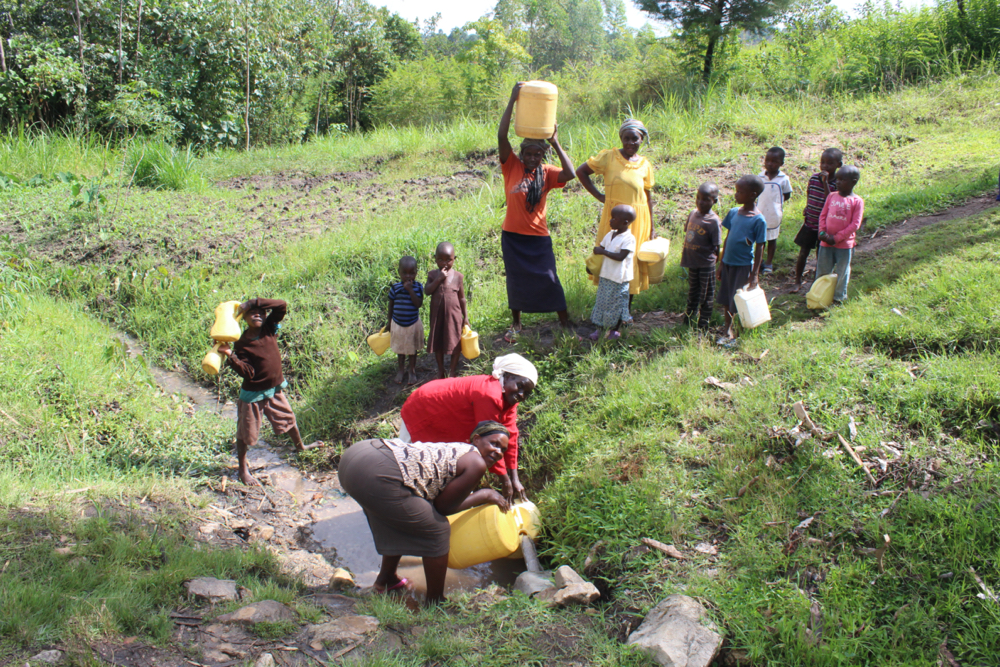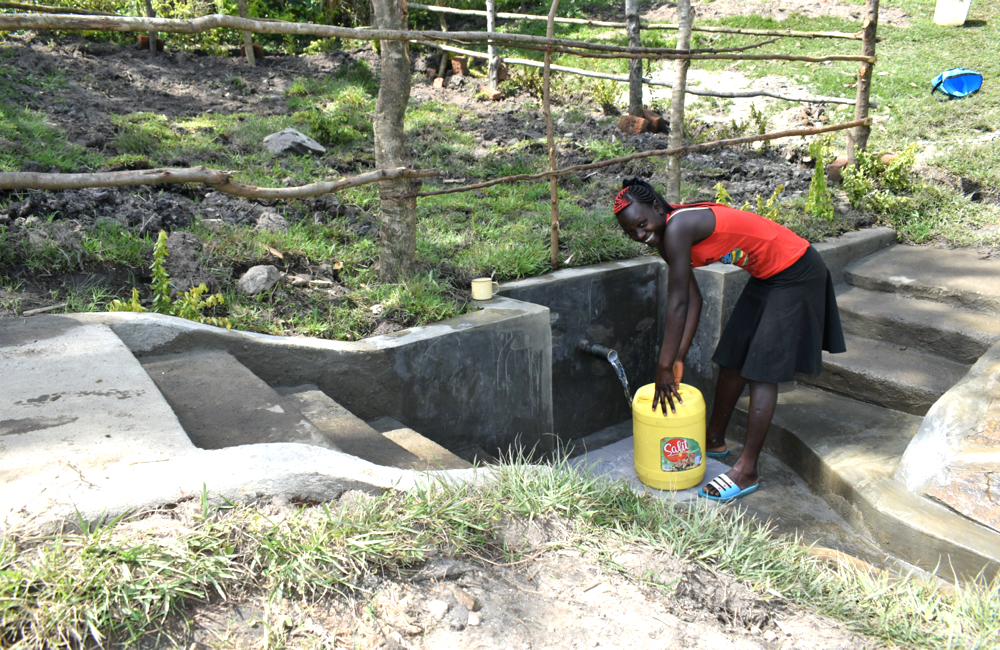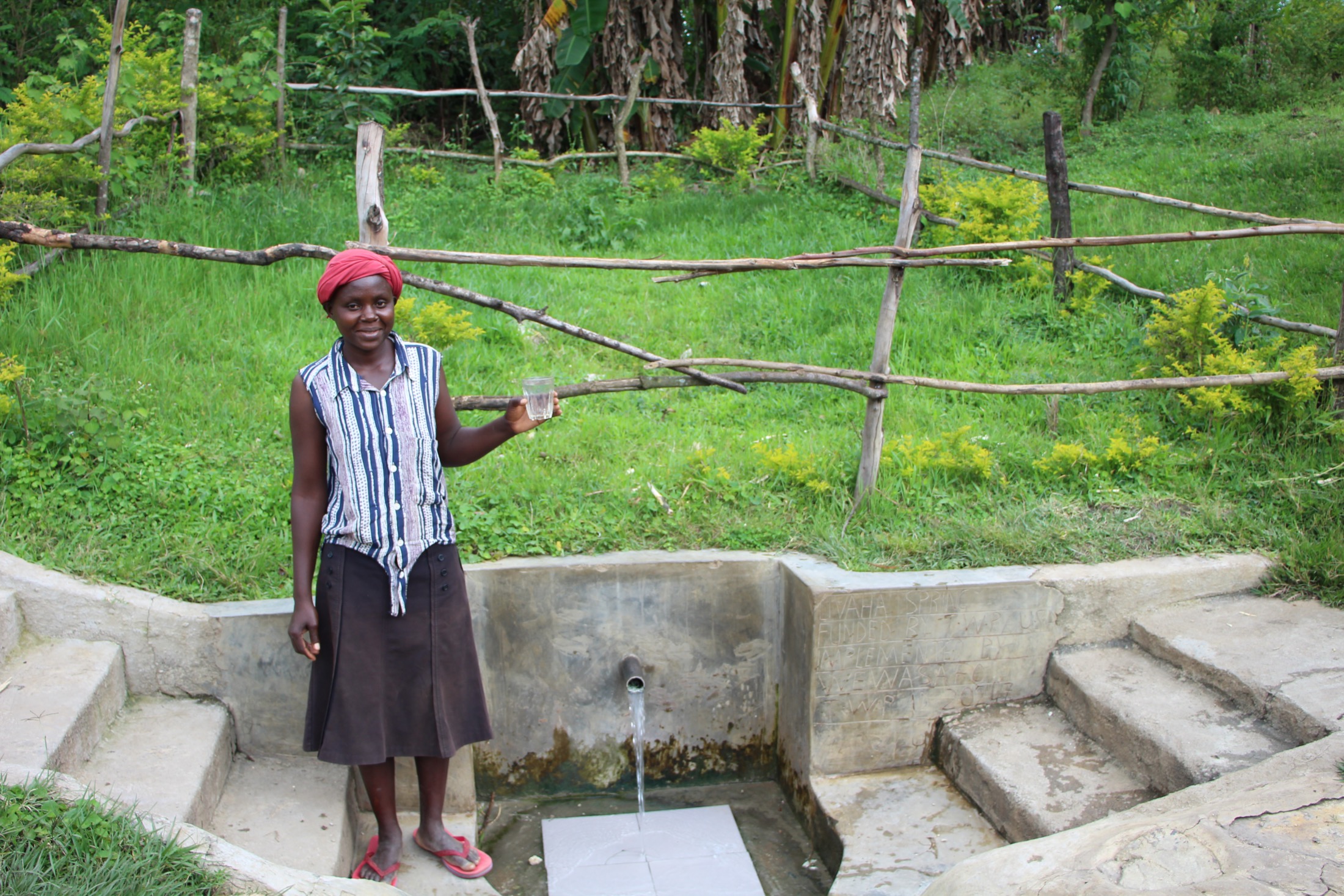Impact a Year Later: This spring helps pay for Tabitha’s schooling
Clean, reliable water is transformative. Look no further than Livaha Spring in Lukala B community in Western Kenya.
People from neighboring Lukala B and Lukala C communities share Livaha Spring as a place to collect water. The natural spring provides ample water throughout the year. To make it easier to collect water, community members improvised a discharge pipe by sticking an iron sheet directly into the earth to help the water come out in a spout. But heavy rains frequently washed the sheet away, forcing community members to scoop water with a jug.

People wait in line to collect water at the spring
The constant issues added pressure on the already-popular spring. When the sheet broke, women would wake up as early as 5:30 am to avoid lines and collect the least-dirty water. But there always seemed to be a crowd, no matter how early people went. And Women and girls expended all of this effort to collect unsafe water. The pooled water from the unprotected spring was contaminated from nearby runoff and the people who put their buckets directly into the source. As a result, people often suffered from waterborne illnesses.
“We have been taking dirty water from the spring, which frequently caused waterborne and water-related diseases. Given that I have a very big family of more than 25 (both adults and children), much has been spent buying drugs and hospital bills,” said 64-year-old farmer Charles Muhuyi Kokoyo when we visited the community the first time.
In December 2020, TWP worked with the community to protect the spring. The once unsafe source that caused long lines of people to wait to collect water was transformed into a safe water point that allows people to fill up water quickly and safely. No more long lines!

“Now that we have clean water, we will be able to maintain good hygiene to curb the spread of COVID-19 and other hygiene-related diseases. We spent a lot of time at the spring. Still, now it’s easier and faster to fetch water, so the time that we wasted before will be used on other income-generating activities like farming and businesses,” said Mr. Kokoyo after the spring protection was complete.
And it was like he saw directly into the future. A year after the project’s completion, our team revisited the spring as a part of our quarterly monitoring for every water point. This time, we spoke with people to hear how the spring impacted their lives. Tabitha C., a 17-year-old student in the community, was one of the people we met during the visit.
“There are no issues. Very little time is spent at the water point. Getting water nowadays is very easy and enjoyable. I have time to do my revision, and at the moment I am doing well at school because I no longer waste time at the spring,” she said.

Tabitha at Lavaha Spring.
She also has enough water to help her run a small vegetable business. Just like Mr. Kokoyo predicted!
“I can plant vegetables throughout the year because water is always available. All our neighbors are sure to get vegetables at our home, no matter how dry it may be. By so doing, I can raise some money and buy myself a few items needed at school.”
Home More Like ThisTweet